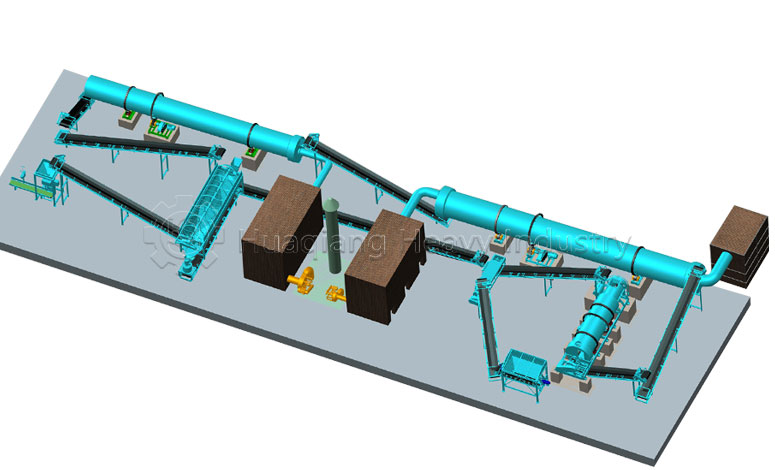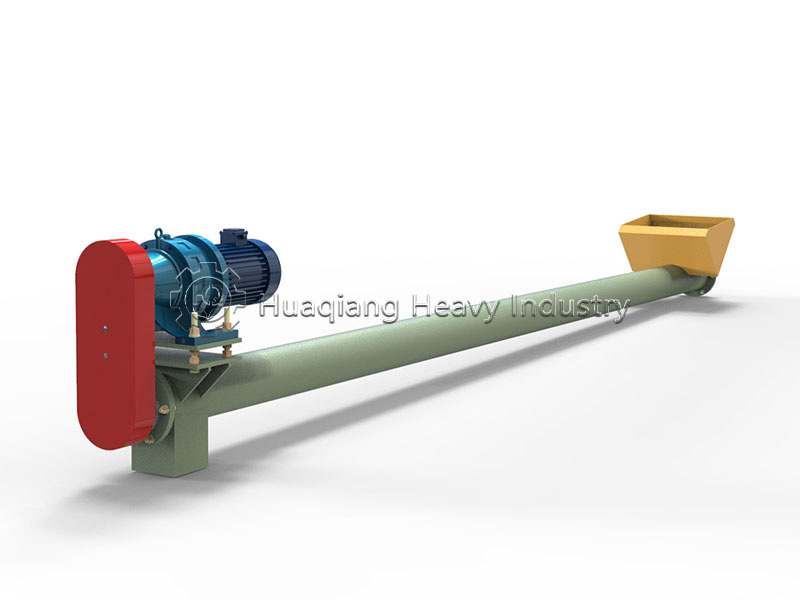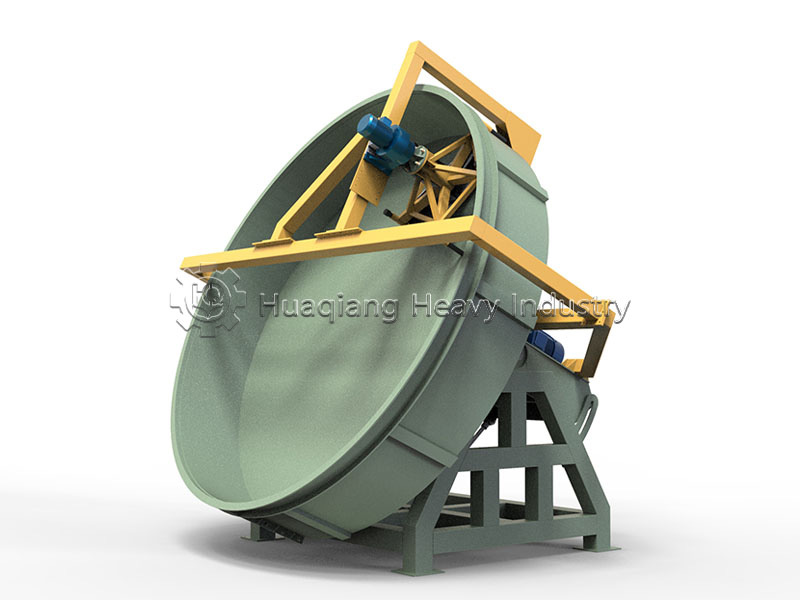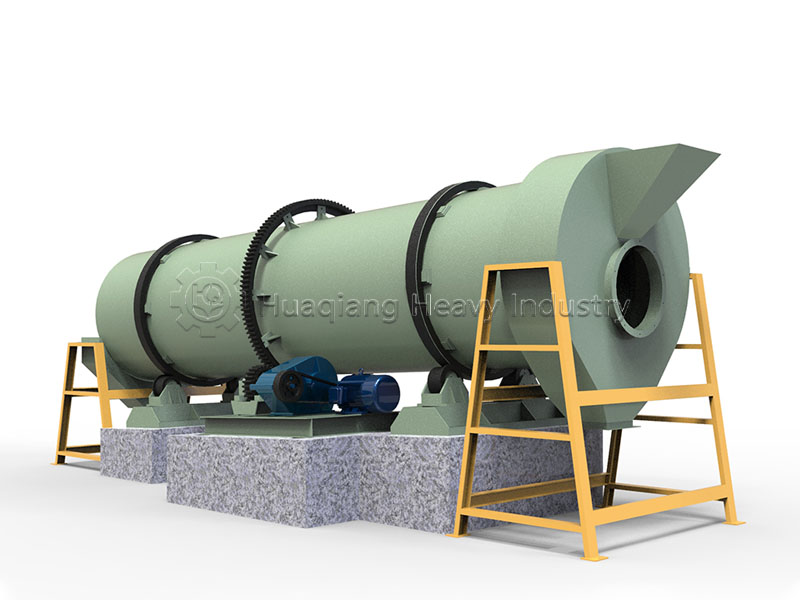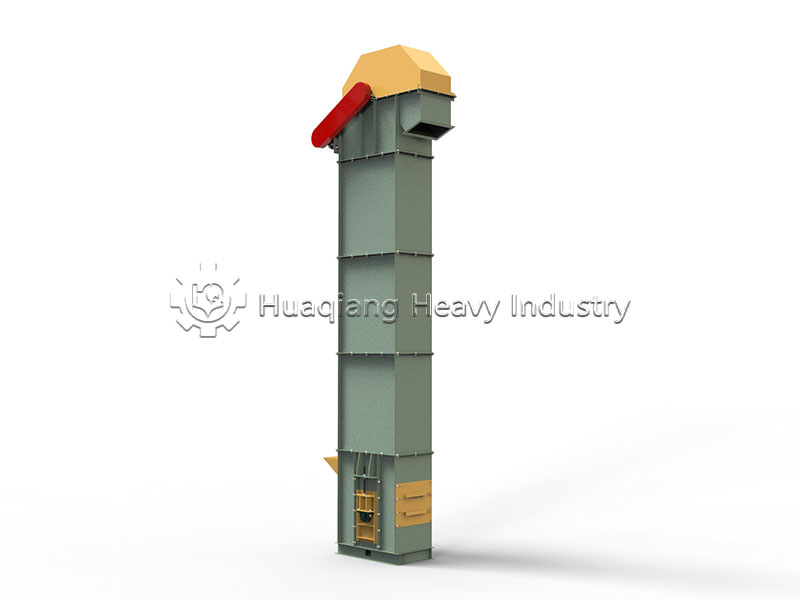In modern agricultural fertilizer production, organic fertilizer and NPK compound fertilizer represent two different production philosophies and technical routes. Understanding the production differences between these two types of fertilizers is of great significance for both agricultural producers and investors.
Production Equipment Differences
Organic fertilizer production requires specialized fermentation processing equipment. Core equipment includes solid-liquid separators and crushers in the pretreatment stage, turners or fermentation tanks in the fermentation stage, and granulators and dryers in the deep processing stage. These equipment are specifically designed to handle the biological transformation process of organic raw materials.
NPK compound fertilizer production focuses more on precise batching and granulation equipment. Key equipment includes automatic batching systems, specialized crushers, mixers, and various granulation equipment. The post-processing stage’s dryers, coolers, and screening machines ensure the final product’s physical quality.
Production Process Comparison
The core of organic fertilizer production is the biological fermentation process. Raw materials first undergo pretreatment to adjust the carbon to nitrogen ratio to the ideal range of 25:1 to 30:1. This is followed by the high-temperature fermentation stage, where temperatures need to be maintained at 55-70°C for several days to eliminate pathogens and weed seeds. The entire fermentation cycle typically requires 2 to 8 weeks, completely relying on microbial decomposition.
In contrast, NPK compound fertilizer production places greater emphasis on the precision of chemical formulations. The production process mainly includes three key stages: raw material proportioning, granulation forming, and drying and cooling. Wet granulation requires the addition of binders, while dry granulation relies on mechanical pressure for direct forming. There is no biological fermentation stage in the entire process, with the core focus being precise control of various nutrient ratios.
Investment Cost Analysis
From an investment perspective, organic fertilizer production offers greater flexibility. Small production lines require investments between 100,000 and 300,000 yuan, suitable for family farms. Medium-sized production lines require investments of approximately 500,000 to 1 million yuan, while large fully automated production lines need investments of 1 to 3 million yuan.
NPK compound fertilizer production has relatively higher investment thresholds. Small blending production lines require 10,000 to 50,000 US dollars, medium-sized granulation lines require investments of 50,000 to 100,000 US dollars, while large drum or disc granulation production lines need investments of 100,000 to 150,000 US dollars, with production capacity reaching 1 to 6 tons per hour.
Suitable Application Scenarios
Organic fertilizer production is particularly suitable for regions focusing on the resource utilization of organic waste, especially in locations with high environmental requirements and easy access to organic raw materials. Areas around livestock farms and large farms are ideal choices, as they can both solve waste treatment problems and produce valuable fertilizer products.
NPK compound fertilizer production is more suitable for scenarios pursuing precise nutrient control and large-scale production. Large fertilizer factories typically choose this production method to meet the precise nutrient demands of field crops and achieve bulk fertilizer supply.
Both fertilizer production methods have their distinct characteristics – organic fertilizer emphasizes resource recycling and environmental sustainability, while NPK compound fertilizer focuses on nutrient precision and production scale. Investors should make reasonable choices based on their resource conditions, market demands, and technical capabilities.
In summary, both organic and NPK fertilizer production lines represent sophisticated manufacturing systems with distinct technological pathways. The organic fertilizer production line relies heavily on biological processes, utilizing equipment like chain compost turner and large wheel compost turning machine for efficient organic fertilizer fermentation, followed by specialized organic fertilizer granulator systems. In contrast, the npk fertilizer production line emphasizes precision engineering through advanced granulation technologies, employing equipment such as rotary drum granulator, drum granulator, and high-pressure double roller press granulator. The complete npk production process integrates various fertilizer granulator machines including npk fertilizer granulator and fertilizer roller press machine to achieve precise nutrient formulations. Modern bio organic fertilizer production line configurations often combine elements from both systems, utilizing wheel compost turner technology alongside advanced drum granulation equipment. Ultimately, whether choosing an npk production line or organic system, successful implementation depends on selecting appropriate equipment that aligns with raw material availability, production scale, and market requirements within the comprehensive npk fertilizer manufacturing process framework.


